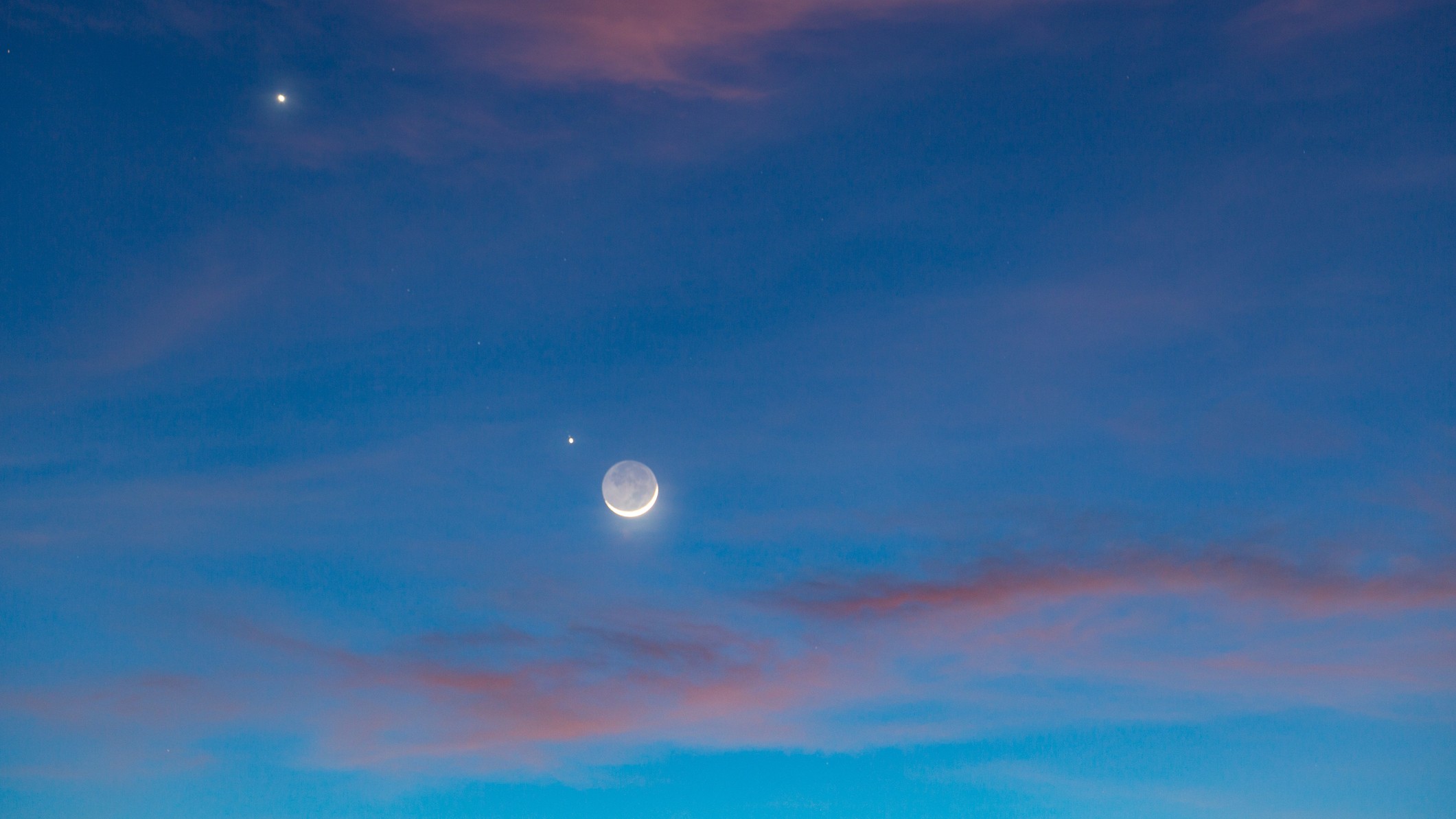How to see the moon in conjunction with 5 planets this month
In early July, our natural satellite will appear close to Mars, Saturn, Jupiter, Venus and Mercury.

In early July, the moon will pass close to all three of Earth's neighboring inner solar system planets, plus the two largest planets that orbit the sun.
First, the gas giants Saturn and Jupiter will be viewable next to the moon before sunrise early in the month. Later in July, Mercury, Venus and Mars will shine close to a crescent moon after sunset.
All five planets and Earth's moon will be easily visible to the naked eye from anywhere in the world with clear skies. However, a good pair of stargazing binoculars or a nice small telescope will enhance the view.
The first conjunction (a celestial event in which two objects appear close together in Earth's night sky) of the moon and a planet will occur on July 7, when an 80%-lit waning gibbous moon will be visible just below Saturn. The two objects will rise in the southeastern night sky in the early morning and will be visible until dawn.
On July 11, a 37%-lit waning gibbous moon, positioned slightly above Jupiter, will rise in the east late at night. The following morning, the moon will have waned to 27% illumination and will be visible just below Jupiter.
Mercury, Venus and Mars — the other three rocky planets in the solar system — will be closely grouped with a slender waxing gibbous crescent moon in the early-evening western night sky from July 19 to July 21.
Because the crescent moon will be barely 5% lit on July 19, however, this will be the hardest night to see it close to the rocky planets. That will also be true for Mercury, which will be very low on the horizon. However, bright Venus will be obvious alongside the crescent moon, while Mars will be easily seen above. Don't mistake Mars for Regulus, the brightest star in Leo, which will sit between Venus and Mars. Use binoculars, find a clear view toward the western horizon and begin looking about 35 minutes after sunset, according to When The Curves Line Up, a site run by astronomer Jeffrey Hunt.
Sign up for the Live Science daily newsletter now
Get the world’s most fascinating discoveries delivered straight to your inbox.
On July 20 — the 54th anniversary of Apollo 11, the first moon landing — the crescent moon will be much easier to see. As well as being 10% lit, the moon will have climbed higher and will shine alongside Mars, just above Venus. Mercury will remain low on the west-northwest horizon. While you're gazing at the trio of planets, look for "Da Vinci glow" on the dark limb of the moon. Also called Earthshine, the phenomenon is caused by reflected sunlight from Earth's oceans, clouds and ice.
The following evening, July 21, a 16%-lit crescent moon will appear even higher above the western horizon, but it will be aligned with Mars and Venus. Mercury will be to the right of Venus.
On the following nights, the moon will depart the scene and climb higher into the post-sunset sky, with Venus sinking into the sun's glare while Mercury continues to rise above it. On July 28, Mercury will shine within just a tenth of a degree of Regulus in twilight, according to Adler Planetarium. It should be an excellent sight, even to the naked eye.
You can check the exact rise and set times for the planets for your location using the Night Sky page on timeanddate, or planetarium software such as Stellarium Web Online Star Map.

Jamie Carter is a freelance journalist and regular Live Science contributor based in Cardiff, U.K. He is the author of A Stargazing Program For Beginners and lectures on astronomy and the natural world. Jamie regularly writes for Space.com, TechRadar.com, Forbes Science, BBC Wildlife magazine and Scientific American, and many others. He edits WhenIsTheNextEclipse.com.









